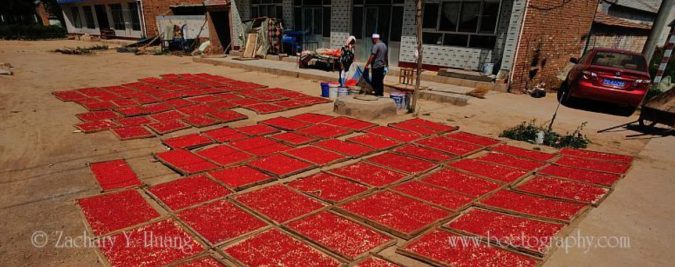Please follow me as I travel (or staying locally) and shoot bees and flowers, during the great 2015.
1. Jan 23. Tucson, AZ. The American Bee Research Conference (organized by AAPA, American Association of Professional Apiculturists) was held there. After the meeting I went to a garden, but it was a season with few flowers. A type of aster seen in ultraviolet (left) and normal vision (right).
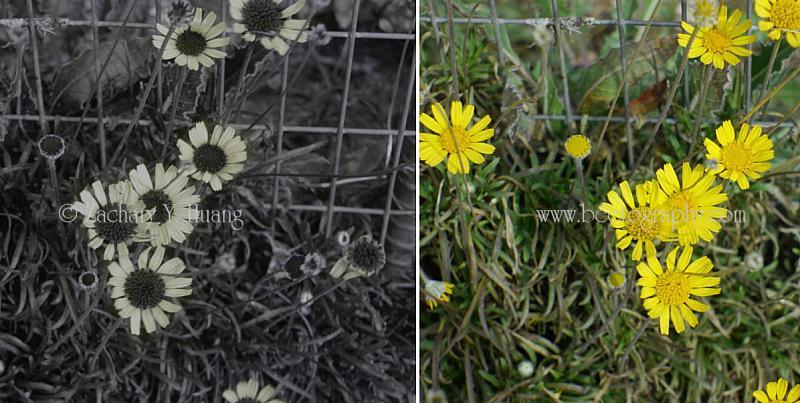
2. April 6. Winter aconite bloomed much later this year, MSU Beal Botanic Garden.
3. April 15. Columbus and East Columbus Beekeepers Association invited me to talk about bees there. The first one was at the Franklin Conservatory and Botanic Gardens, so I went there early to shoot some flowers. Still chilly so did not see many bees. Chihully’s glass sculptures with light shining above. Shot with my cell phone.
4. April 25, bloodroot was blooming.. Waited for bees, but none came.
5. April 27. Bayer Bee Care Center at Research Triangle Park near Raleigh, NC. I was invited there to give a poster presentation. After that I visited UNC Botanical Gardens and Coker Arboretum. Unfortunately I did not bring my larger camera, only the modified ultraviolet camera. I saw many bees foraging on columbine flowers but could not get a good shot because the lens only focuses manually.
6. May 19. May apple was blooming when we visited University of Michigan’s Nichols Arboretum. A bit too early for peonies.
7. June 2. Tulip poplar was blooming at MSU campus. Again, no bees visiting despite lots of nectar dripping down. The two colonies of bees might not have found these 2 trees near the MSU ice cream store.
8. June 6. American holly was blooming and buzzing with honey bees that day.
9. June 24. A type of mustard as seen by “insect vision”. This is done by using a full spectrum camera (one that sees UV, regular light, and IR) with one filter that blocks IR and some red, another one that transmits UV in.
10. July 4. I went out and shot some bees on bird’s foot trefoil and crown vetch.
11. July 4. A bumble bee (a queen? she seems rather large) foraging on crown vetch flowers. Crown vetch flowers resemble Chinese milk vetch, but they are from two different genus.

12. July 8. Heartland Apicultural Society conference was in Albion Michigan (closest to me!) and of course I had to bring my camera there also. I have never seen bees on this flower (a commonly planted agave, in the family Agavaceae, now moved to Aasparagaceae (No, tell me that this plant resembles asparagus!). After a long observation, I determined that the bees (2 or 3) were foraging for water on the flower petals only.
13. July 24. I visited my mother and went to a few plots of vegetables to look for bees. I think I have shot bees visiting eggplant flowers before (in Jiangxi) but this is only the second time I saw it. This is an Apis cerana also.
14. With my keen eyes, I then saw a spider catching a honey bee! I never had a chance to shoot this. You can also see 3 flies, trying to suck some juice from the dying bee. These flies are in the family Millichidae.
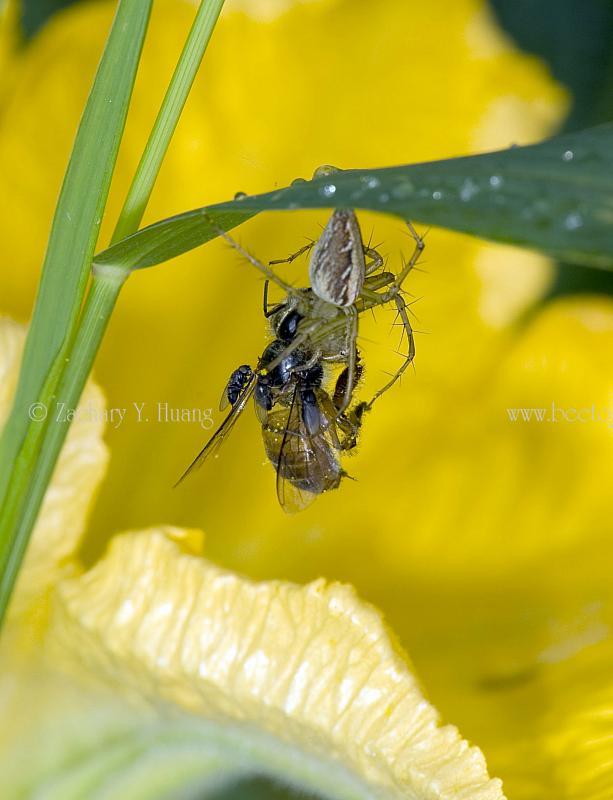
15. July 24. My youngest brother was planting rice. I did that when I was in middle and high school but of course I never could have owned a camera at that time! I think last year I also got honey bees foraging on rice flowers (another flower to process). Two crops are grown in my home town and this is the second crop.
16. The same day. After I shot my brother (no, not with a gun:) I went to another field to see if I can see bees foraging on sesame…Success! I saw Apis cerana foraging on the flowers.
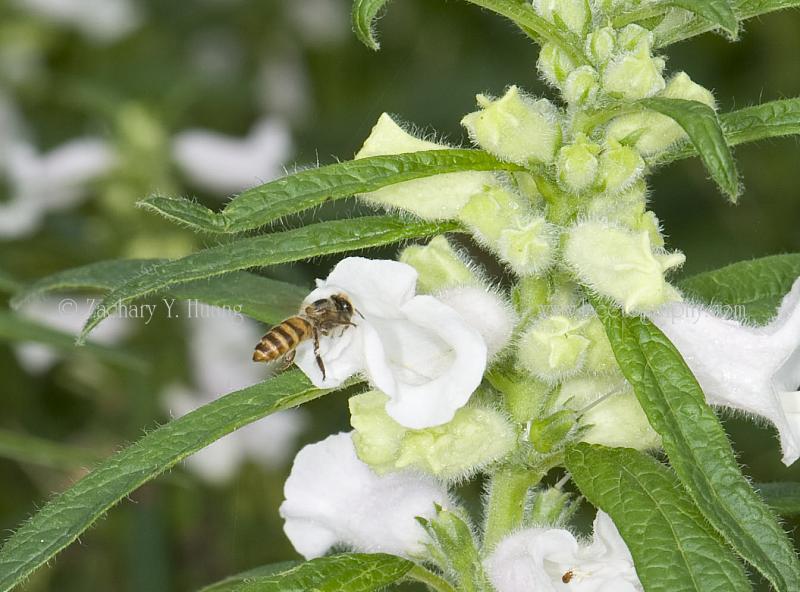
17. July 25. Farmers drying goji berries near Guyuan, Ningxia. I saw some flowers left on the bushes but largely fruits because most of the blooming would be in May. I have previously posted photos of bees foraging on this flower from my own garden.
18. July 25. The berries there are about 2 times larger than those from my garden. They can be eaten fresh like a fruit. Juicy and sweet.
19.. July 30. Apis cerana colonies in front of a house, Ningxia Province.
20. July 30. Apis mellifera foraging on a sainfoin (Onobrychis, Fabaceae) flower. The flowers are really pretty! I was told Western US also grows this plant as a nitrogen fixer as well as for cattle feed, but I have wanted to see this flower for a long time after seeing pictures of it in the internet.
21. A cerana bee foraging on a type of mint (Elsholtzia densa).
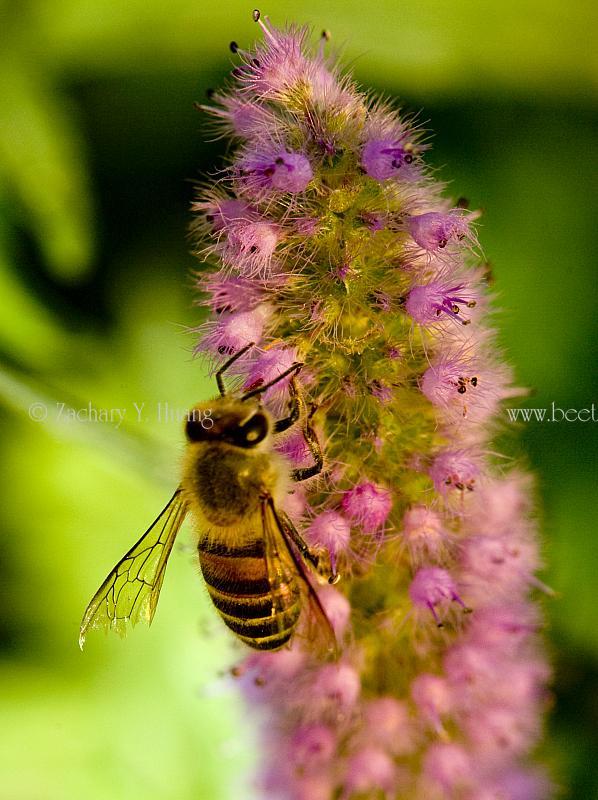
22. I was told that this is Linum usitatissimum. Large fields of flowers and bees were working on it. But foragers were going from the back of the flowers for nectar.
23. Aug.5. Hoya (Asclepiadeace) was blooming on our deck. The plant has to be “root-bound” to bloom — it somehow has to be stressed first, otherwise it wont flower. I saw bumble bees coming to forage on them so I waited for honey bees. Indeed, one bee came back consistently for 3-4 days. I think it is the same one. I should have marked it with a paint to verify this.
24. Aug. 7. I cannot help but to show this beautiful flower, a common black-eyed-susan. What we see are on the left, we can hardly tell the two colors on each petal, but what bees see (right) is so strikingly beautiful! This is done with a filter that simulates bee (or insect) vision: with infrared and some red blocked but all visible light and some ultraviolet (mostly 320-400 nm) recorded by a Nex7 camera. This, of course, requires that the camera is modified (with the filter in front of CCD replaced with one that transmits UV) and also a special lens that allows UV to go through. Most modern lenses have coatings to remove UV so photos are not as hazy.
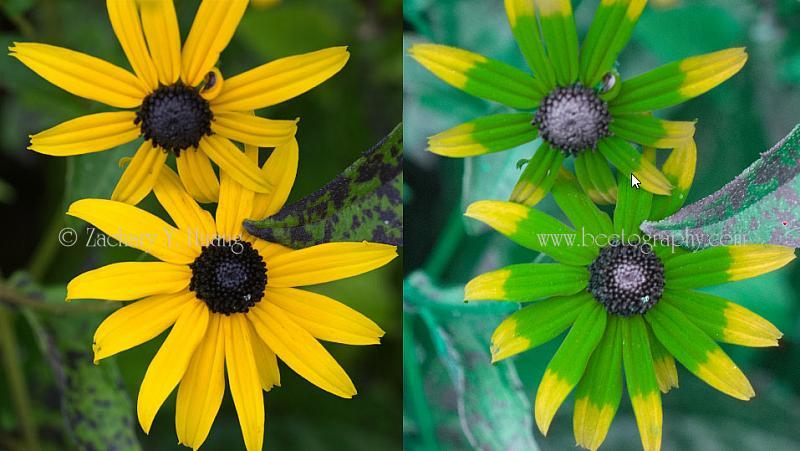
25. Aug 11. I went back to University of Guelph for the Eastern Apicultural Society Conference. Bees were foraging on St. John’s wort , a plant that contains chemicals used for anti-depression.
26. Aug 15. First time to have a photo of bees visiting pepper flowers! This was done in a flower garden away from the campus.
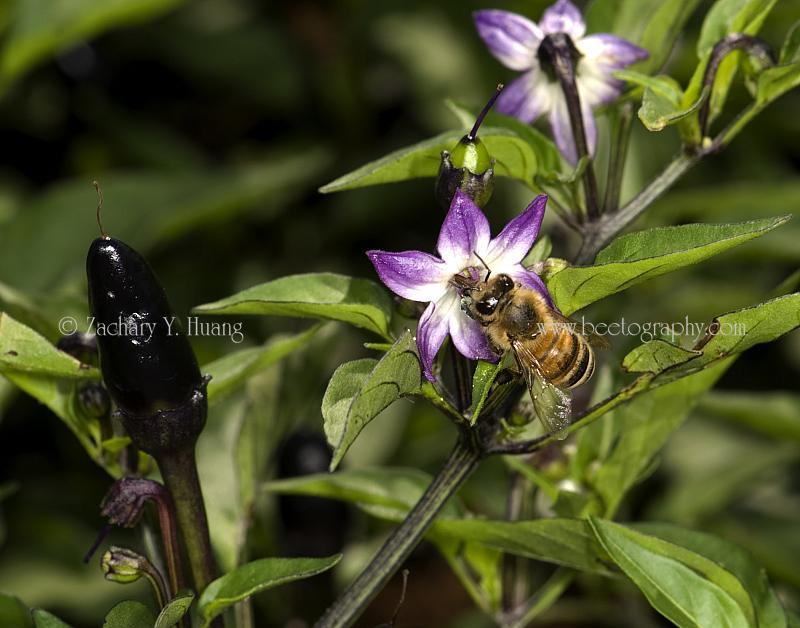
27. Aug 22. I was surprised that MSU has a Chinese plant, Rhus chinensis (Anacardiaceae) blooming near the Music building on that day. Bees were swarming all over the flowers. In China an aphid makes galls from leaves, and the galls are harvested and used as a medicine (Wubeizi). The aphids must not be here since I did not see any galls.
28. Sep 27. That day I saw many honey bees foraging on cucumber flowers but none on water melon flowers. so I picked one water melon flower next to a cucumber one. waited for 2 hours…one honey bee tried to land but flew away. Halictid and bumble bees visited both. 555。
29. Here are the cucumber (left) and water melon (right) flowers under insect vision. both have a green center.
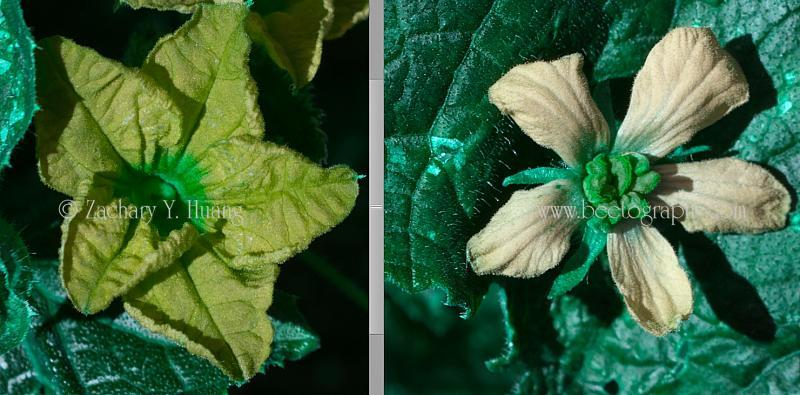
30. Oct 22. Another bee meeting in Traverse City (the cherry capital of Michigan). This is Traverse Lake. Too late to shoot bees!
31. Nov. 2. I went to attend a meeting by SETAC (Society of Environmental Toxicology and Chemistry) and presented one talk on pesticides in pollen and nectar. Visited Red Butte garden but again too late for bees. There were some poppies in front of the Mormon Church, and bees were working on them!
This is the last day of 2015. Happy New Year to everyone!

